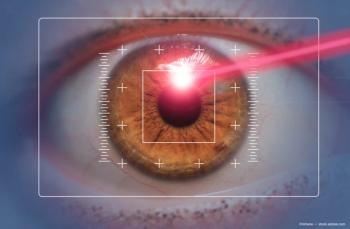
Study: moxifloxacin yields higher peak levels than gatifloxacin
Fort Lauderdale, FL-In a comparison of penetration of moxifloxacin HCl ophthalmic solution 0.5% (Vigamox, Alcon Laboratories) and gatifloxacin ophthalmic solution 0.3% (Zymar, Allergan) in a human cornea transplant model, mean peak levels of moxifloxacin were higher than those of gatifloxacin in corneal tissue and the aqueous humor, said Edward Holland, MD.
"Moxifloxacin had superior penetration over gatifloxacin," said Dr. Holland, director, Cornea Services, Cincinnati Eye Institute, and professor of ophthalmology, University of Cincinnati, Cincinnati, OH. "We found a three-fold greater level of moxifloxacin (48.5 μg/g) in the corneal stroma and anterior chamber when compared with gatifloxacin (15.7 μg/g). If you looked at the epithelium and endothelium, it was seven-fold and 10-fold higher."
Levels of moxifloxacin and gatifloxacin in the epithelium were 81.2 μg/g and 12.3 μg/g, respectively. In the endothelium, the respective levels were 76.1 μg/g and 7.3 μg/g. The mean peak level of moxifloxacin in the aqueous humor was also approximately three-fold higher than the level of gatifloxacin.
After aqueous humor sampling and excision of the corneal button, the samples were placed on dry ice and shipped for analysis. The corneas were dissected into epithelium, stroma, and endothelium and assayed using a validated simultaneous HPLC-fluorescence method.
The study also shows that high levels of penetration can be achieved with one drop of a fluoroquinolone antibiotic, Dr. Holland said.
"These are further data supporting why you can consider changing your preoperative regimen to administer the antibiotic the day of surgery," he said. "With preoperative dosing of just one drop, you can achieve very high levels of moxifloxacin in the cornea and the anterior chamber. It well exceeds the MIC 90s for all the major pathogens that we're most concerned about for endophthalmitis and keratitis."
The data were presented in a poster at the annual meeting of the Association for Research in Vision and Ophthalmology.
Newsletter
Don’t miss out—get Ophthalmology Times updates on the latest clinical advancements and expert interviews, straight to your inbox.
















































.png)


